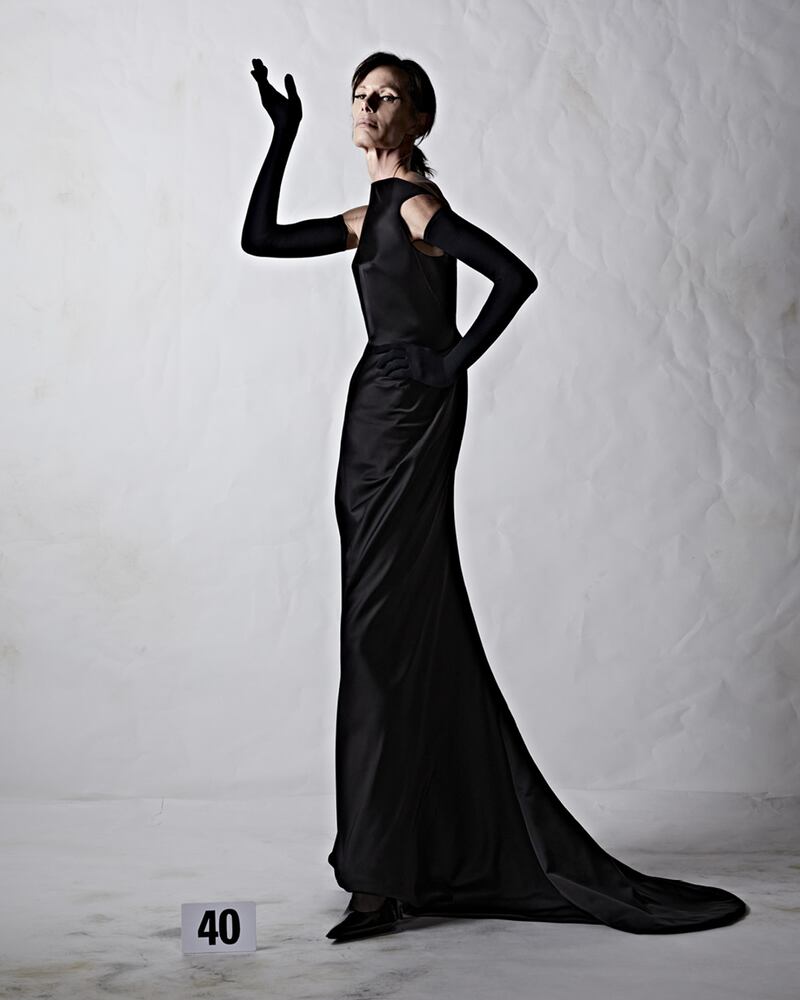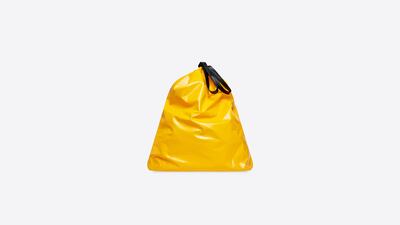
The Business of Fashion
Agenda-setting intelligence, analysis and advice for the global fashion community.

Agenda-setting intelligence, analysis and advice for the global fashion community.

PARIS — A few weeks ago, some fashion editors were still unsure about covering Balenciaga’s March show: some US and UK outlets in particular were nervous about the risks of associating themselves with the scandal-tainted fashion house.
But since Balenciaga teased plans for a major reset last month, at both owner Kering’s annual results and in an interview that designer Demna gave to US Vogue, the brand at the centre of fashion’s highest-profile scandal since Dolce & Gabbana was frozen out of China in 2018 has reasserted its status as a hot ticket at Paris Fashion Week.
Balenciaga’s Sunday show — which is expected to be a radically pared-back affair, leaning on its archive — will be a key test for whether the brand can bounce back from the crisis that engulfed it in late November after backlash to an ad campaign featuring S&M-inspired products alongside children boiled over, resulting in social media outrage, cable news takedowns, and vandalism and protests at stores.
Ahead of the high-stakes outing, BoF breaks down what happened, what to expect from the show and where one of fashion’s most hotly-watched companies might go from here.
ADVERTISEMENT

Since Vetements-founder Demna Gvasalia took the creative helm at Balenciaga in 2015, the brand has grown spectacularly, pushing past $2 billion in estimated annual sales on the back of extreme silhouettes, hit streetwear and sneakers, internet savvy-marketing and blockbuster shows laced with socio-political critique. Balenciaga started to rebalance its image, reasserting its luxury credentials with an haute couture revival and red-carpet push. But during ready-to-wear shows the brand continued to issue stunty products like trompe-l’œil leather potato chip bags and, last season, tapped controversial rapper Ye to open its show.
Social media outrage boiled over after a holiday gifting campaign that posed children in intimate settings with adult products including teddy bear bags accessories with S&M-inspired details, like harnesses and padlock necklaces. The brand recalled the campaign, which Demna has called a “big mistake” and a “wrong artistic choice.” But the backlash continued to grow as some claimed to spot pedophilic messages embedded in legal documents in the background of the campaign photos. In another image starring Isabelle Huppert, sleuthers zoomed in on legal briefs from a Supreme Court decision related to child pornography and a book by an artist whose subjects have included disfigured children that were contained in the images. Balenciaga said the content of the briefs was accidental — initially threatening legal action against a production company that provided the props before apologising for this misstep, too.

As the controversy spread, particularly in English-speaking countries, key markets like the US, the UK and the Middle East were the most heavily impacted. (The fallout has been more muted in Europe and hardly noticeable in Asia, where the brand continues to grow swiftly).
Fourth-quarter sales at Kering’s “Other Luxury” division, which includes Balenciaga, fell 4 percent year-on-year, compared to 13 percent growth in Q3. That impact could be more extreme for Q1 this year, as the prior quarter included 2 months of normal trading before the scandal erupted. Kering says it hopes things will start to improve for Balenciaga from the second quarter of this year.
Apart from its repeated apologies, Balenciaga has pulled the plug on nearly all communications since the scandal hit. Throughout the pivotal year-end holidays and Lunar New Year, the brand’s social channels posted only archival videos from the time of founder Cristobál, as well as a few looks from the ultra-classic “Garde Robe” line launched in November.
In February, Balenciaga said it was partnering with the National Children’s Alliance, a US-based network of organisations dedicated to fighting child abuse, and signed with a “best-in-class” communications agency to help approve its content creation and approval processes. Kering also named a “brand safety” chief to police content across its brands.
Balenciaga couldn’t lay low forever. Playing an outsized role in the fashion conversation has long been key to the brand’s identity and promise to customers, compared to more conservative luxury brands that trade in trend-resistant signifiers and styles.
Kering has defended its decision not to dismiss Demna or Balenciaga CEO Cédric Charbit, saying its audit of the incident found “no fouls from anyone, just errors of judgement.”
ADVERTISEMENT
“We found there was no bad intention. We believe people have the right to make mistakes — that’s important to us at Kering. Just don’t make them twice,” said chairman François-Henri Pinault.
But the show comes with significant risk: the event will almost certainly be a target for social media backlash, and may attract protests. But Kering has weighed the potential risks and is taking the chance as a means of testing whether retooling Balenciaga’s approach to marketing and design will allow it to bounce back with the brand’s current team in place.
Balenciaga’s shows often stir up buzz with dystopian sets, and products like $2,000 leather trash bags and bedazzled platform crocs. The approach has provoked delight and distaste in equal measure, helping propel the brand’s message across the internet and fuel rapid growth. But these lightning-rod moments risked tiring some shoppers, as well as making it harder for Balenciaga to convince the public that its recent missteps were accidental. (Demna has repeatedly insisted the campaign controversy was not intended to provoke).
Now, Balenciaga plans to come back with a stripped-back show that will attempt to reset the brand and refocus the narrative on its heritage — and Demna’s clothes.
Fashion insiders know that exploring the architectural, exaggerated silhouettes of Cristobál Balenciaga’s archive has been an interest of Demna’s since he started at the brand. But his experiments in draping and construction were often drowned out by the commercial success of his twisted streetwear, as well as media attention generated by his dramatic shows.
This time around, buyers and critics are expecting a more elevated, traditionally elegant look. The new collection could be more in line with his archive-inspired couture shows or a more runway-ready declination of the ultra-classic “Garde Robe” line.
The show will take place in a central Paris location with a minimal set, covered in white toile, a major shift away from the brand’s pattern of immersive, high-production blockbusters staged at film studios on the outskirts of town. Big-name celebrity guests are not expected to attend.
Firstly, the show will be a key test for whether Demna can still activate Balenciaga’s central role in the fashion conversation without reigniting major social media backlash. The brand is still heavily impacted in key markets like the US, so that’s hardly a given.
ADVERTISEMENT
Secondly, we’ll see if the brand can reassert its fashion authority and generate buzz through design rather than relying on marketing stunts. A more muted online reaction could still be considered a success if the brand manages to generate strong engagement with key stakeholders like retailers, editors and top clients.
Demna’s hit revamp of Balenciaga was still driving rapid growth before the brand’s PR crisis last year. But some early adopters had begun to tire of the brand’s ironic, streetwear-heavy merchandising and stunty marketing and may welcome a new approach.
From a couture revival to winning the Met Gala, the Kering-owned brand is white-hot. Ahead of its buzzed-about Paris Fashion Week show Saturday, CEO Cedric Charbit speaks to BoF about the strategy behind ‘new era’ Balenciaga and his plan for pushing sales to the next level.
Late Friday, the brand issued further apologies and abandoned its plan to sue a production company amid continued outrage in response to its recent holiday campaign.

Robert Williams is Luxury Editor at the Business of Fashion. He is based in Paris and drives BoF’s coverage of the dynamic luxury fashion sector.
From where aspirational customers are spending to Kering’s challenges and Richemont’s fashion revival, BoF’s editor-in-chief shares key takeaways from conversations with industry insiders in London, Milan and Paris.
BoF editor-at-large Tim Blanks and Imran Amed, BoF founder and editor-in-chief, look back at the key moments of fashion month, from Seán McGirr’s debut at Alexander McQueen to Chemena Kamali’s first collection for Chloé.
Anthony Vaccarello staged a surprise show to launch a collection of gorgeously languid men’s tailoring, writes Tim Blanks.
BoF’s editors pick the best shows of the Autumn/Winter 2024 season.